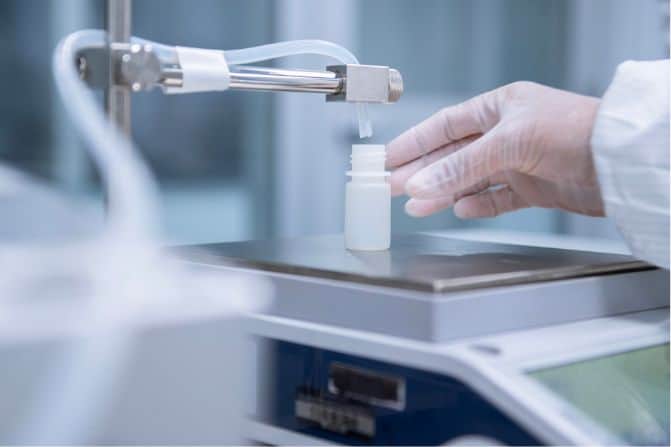NGS Service Lab Hurdles
The sequencing service lab market is hot right now, with over 75,000 genetic tests already available and a predicted clinical sequencing market value of $7.7 billion by 2020. Rising maturity of analysis techniques coupled with decreasing sequencing costs has led to an explosion of companies competing to reveal your genetic markers or whole genome. As pressures mount on existing service labs, new challengers will need to scale quickly with differentiated offerings. With competition rising, your lab will face several hurdles:
- Producing test results faster, either by process improvements or STAT-model adoption.
- Maximizing employee and workspace efficiency.
- Continuing R&D innovation without diverting resources to the testing lab.
Learn more about these emerging challenges, and how one supply chain decision can help you get ahead in the NGS service lab market.
Get Faster Turnaround Times in Your NGS Service Lab
Turnaround times are a powerful competitive differentiator, whether you perform laboratory developed tests (LDTs) or consumer genomics services. The American Association for Clinical Chemistry (AACC) predicts that as more targeted therapeutics are released, demand for clinical NGS will grow and shift NGS service labs towards a STAT model, where high-priority tests are performed immediately rather than in batches. This rapid processing and turnaround can significantly improve patient care when hours matter. A shift to STAT will result in CLIA lab employees losing the advantage of prepping reagents in bulk, instead requiring small volume preps multiple times per day. This repetitive reagent prep cuts into valuable turnaround time or requires a second technician working in parallel. While adopting these changes can help you get ahead in the NGS service lab market, ignoring them can cause you to fall behind. Labs that choose to continue with the traditional model will be forced to cut time elsewhere in their process to stay competitive.
Use Your Existing Resources Wisely
Maximizing efficiency of both employees and your limited laboratory space will become more critical as turnaround times decrease. Multiple employees may be running assays at the same time under the STAT model, leaving fewer hands available for supporting tasks. Bench space will be at a premium with more assays being processed at a time, so non-essential work requiring laboratory space may be delayed. Increasing NGS service lab square footage to compensate is usually not a viable option.
A shift to STAT will result in CLIA lab employees losing the advantage of prepping reagents in bulk, instead requiring small volume preps multiple times per day.
With labor requirements rising in the service lab, employees may be diverted from other groups to avoid ballooning salary budgets. This could slow down new assay development or other critical research projects as R&D staff are pulled to run tests.
Stay Ahead of the Competition by Working with a CMO
How can an NGS service lab overcome these challenges without hiring a larger team or sacrificing innovation? The solution is simple: ready-to-use kits or reagents for your specific assay. A kit approach enables employees to start a run instantly, without needing to waste time and bench space on reagent prep. Single-sample kits are optimal for STAT model labs as they reduce reagent waste, while traditional bulk processing labs can gain the same time-saving benefits with larger pre-fill volumes. Reagents that are not shelf-stable at room temperature may be provided in a lyophilized format, saving both time and waste. It is quicker and easier for your technician to rehydrate a powder rather than formulate a complete buffer, and less errors will be possible within the protocol.
Outsourcing your reagent production to a contract manufacturing organization (CMO) builds on these advantages. Working with a CMO frees your employees from spending time on buffer prep, while accessing larger lot sizes minimizes assay variability across technicians.
A kit approach enables employees to start a run instantly, without needing to waste time and bench space on reagent prep.
Some CMOs also offer storage, stock management, and shipment solutions. This enables you to make better use of your square footage; your existing space devoted to storing buffers or raw materials can be converted to valuable bench space. Using a contract manufacturer in your supply chain lets you convert fixed costs into variable costs rather than adding expensive new resources. In summary, a CMO can remove distractions and reduce overhead costs and help you get ahead in the NGS service lab market. In the increasingly crowded service lab landscape, a CMO is your competitive advantage.
Your service lab workflow can benefit from outsourcing reagent prep. If you would like to get ahead by working with a CMO, contact the experts at Argonaut to get started!
Summary:
- Reducing turnaround time in your NGS service lab creates a competitive advantage.
- Adoption of a STAT production model can shave days off turnaround by switching to continuous processing rather than batches.
- Key to STAT production is shifting to prepared single-use reagents and kits.
- Using a CMO to produce the single-use kits frees up employees to engage in production, while also allowing preparation space to be shifted to assay production lines.


